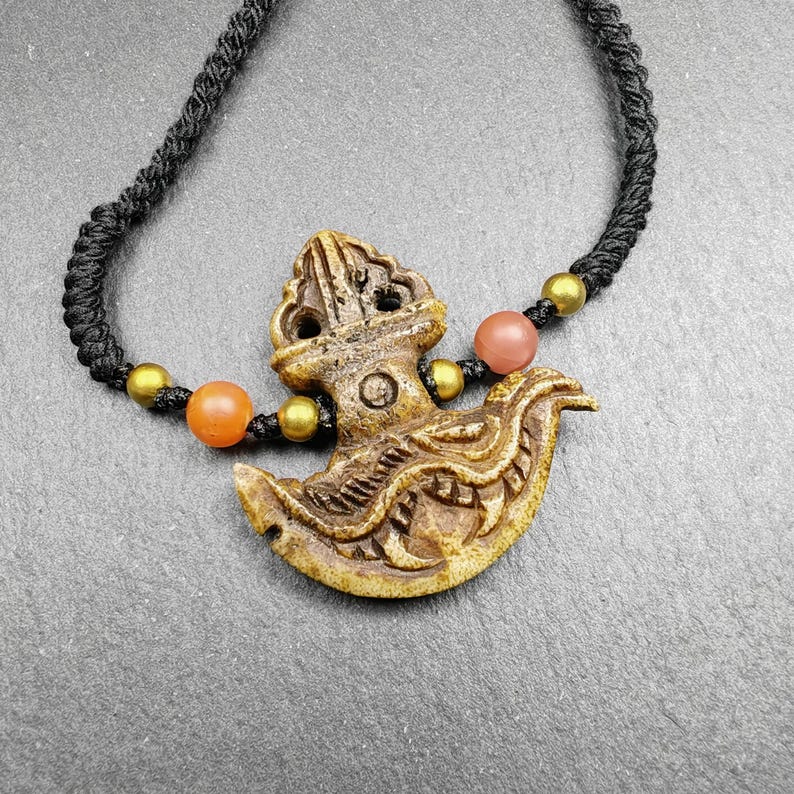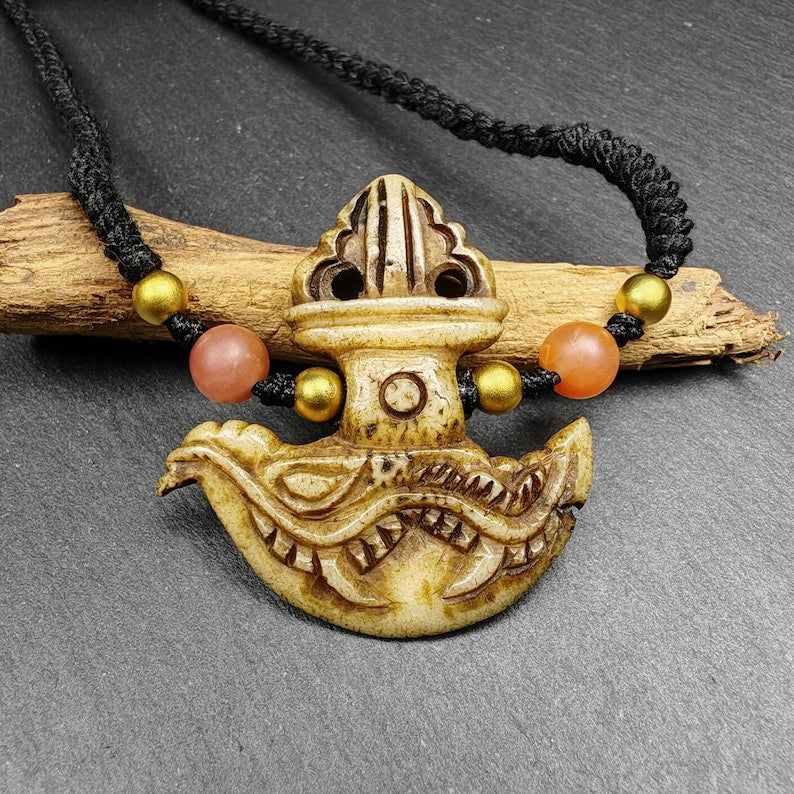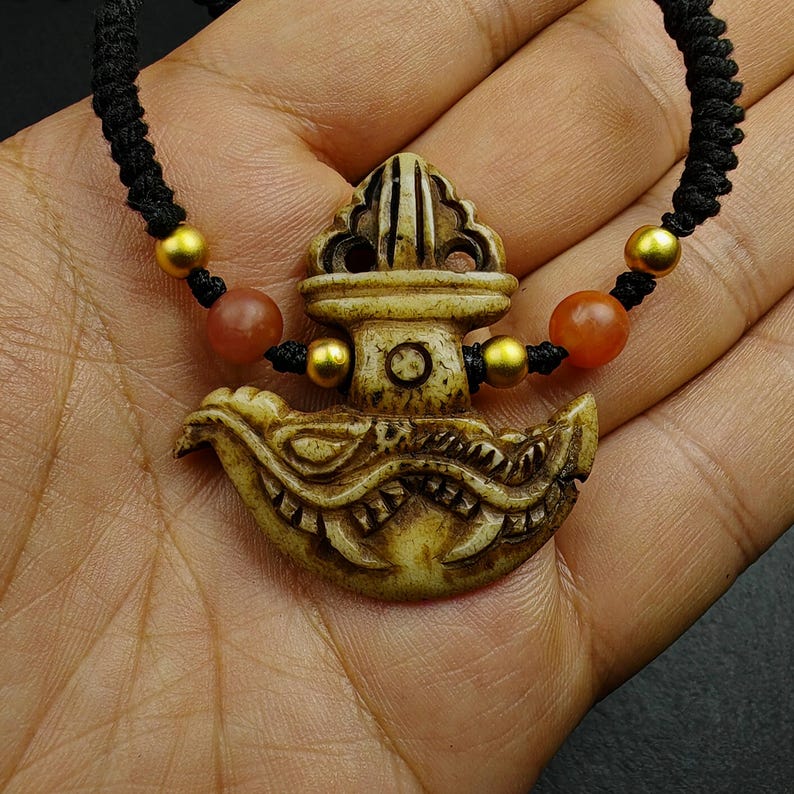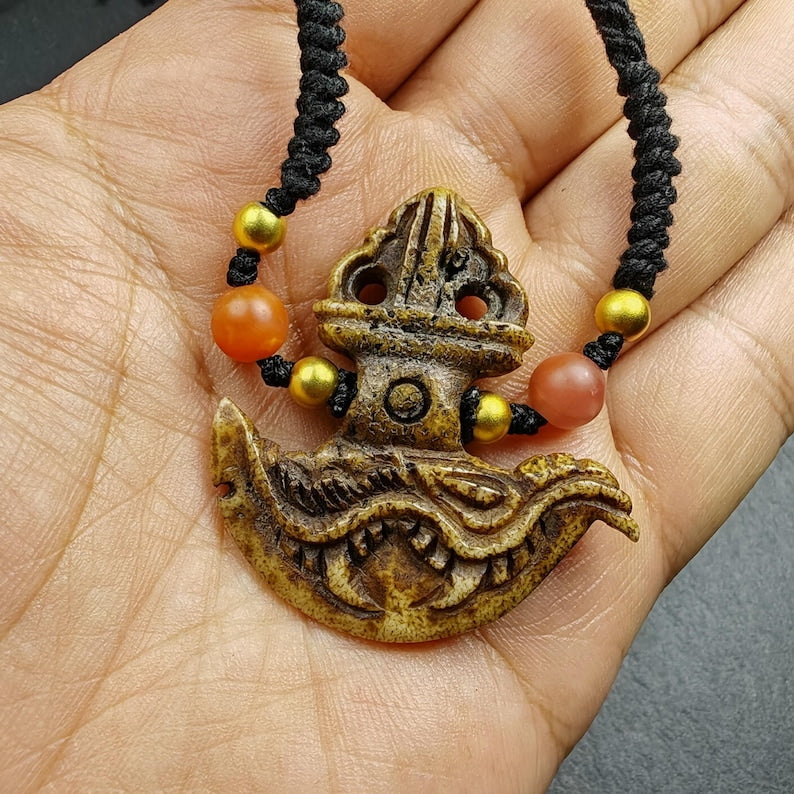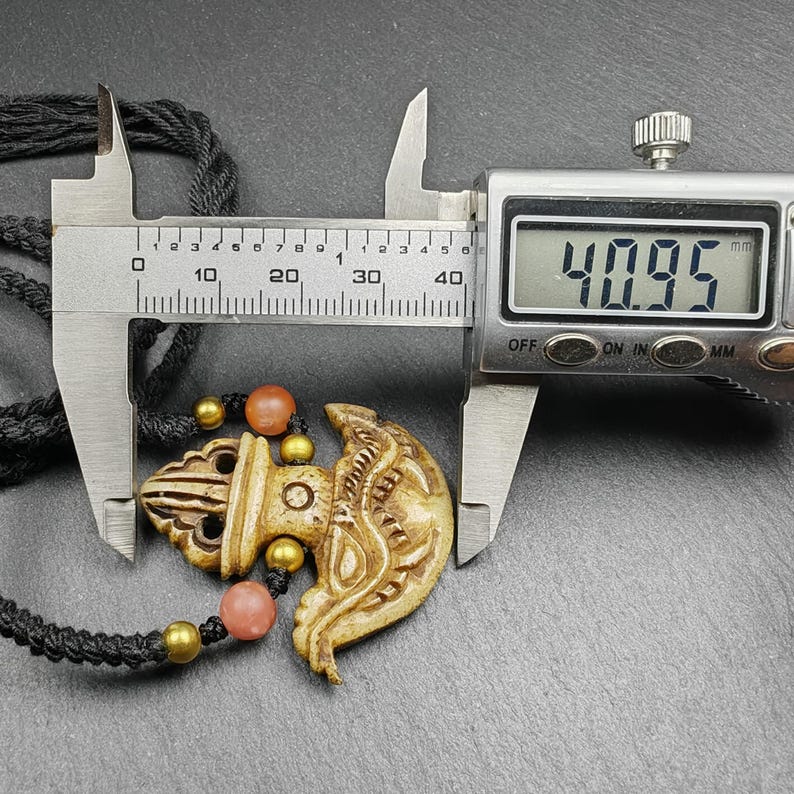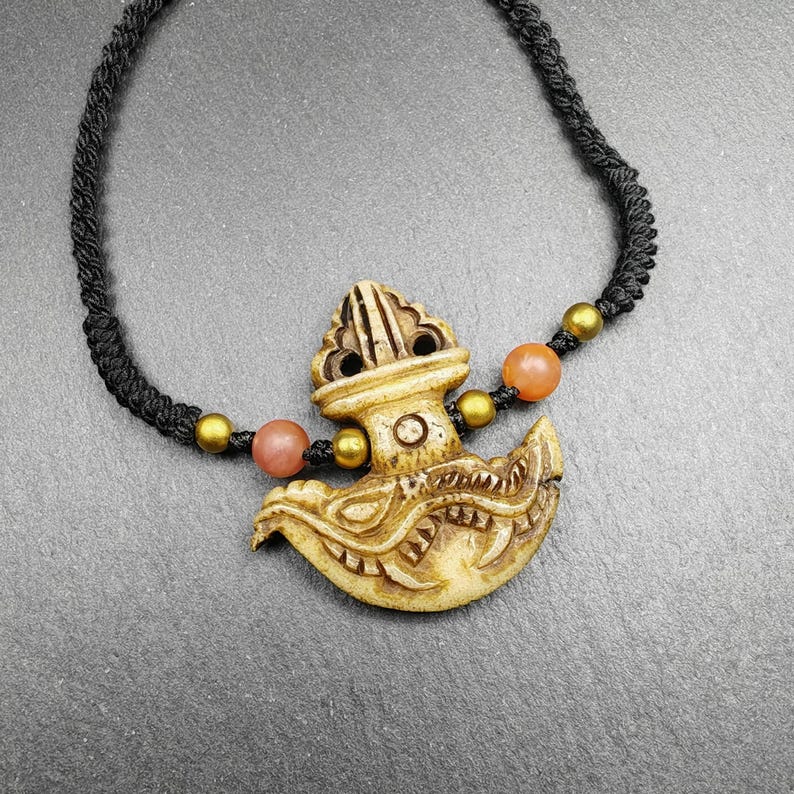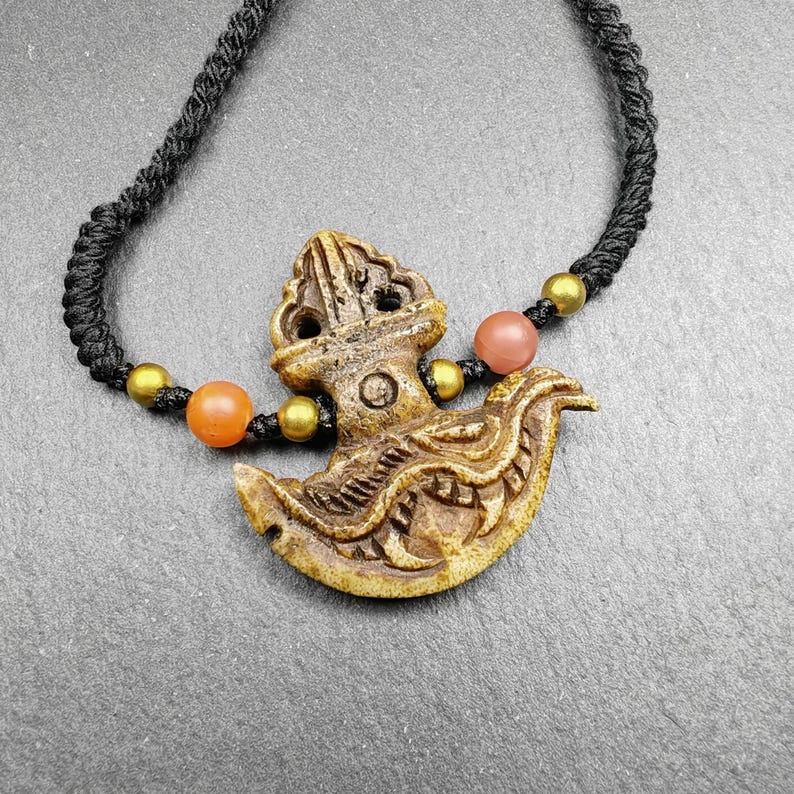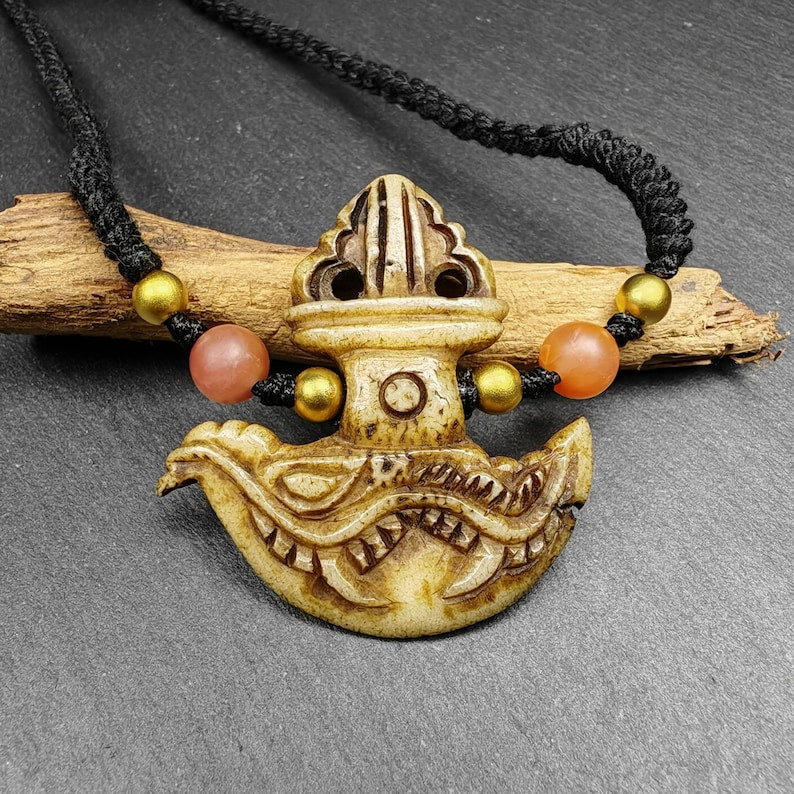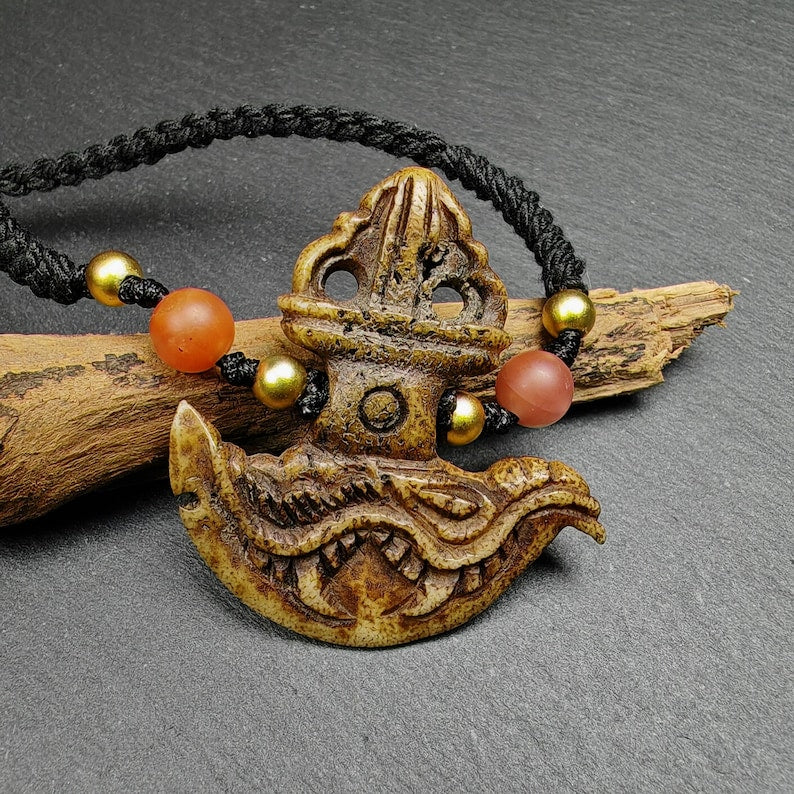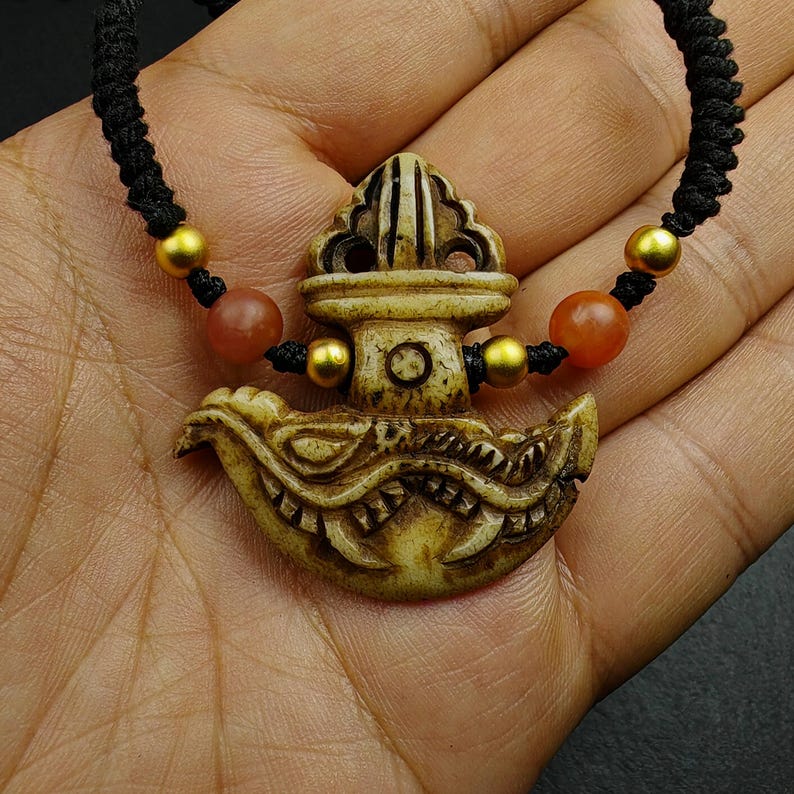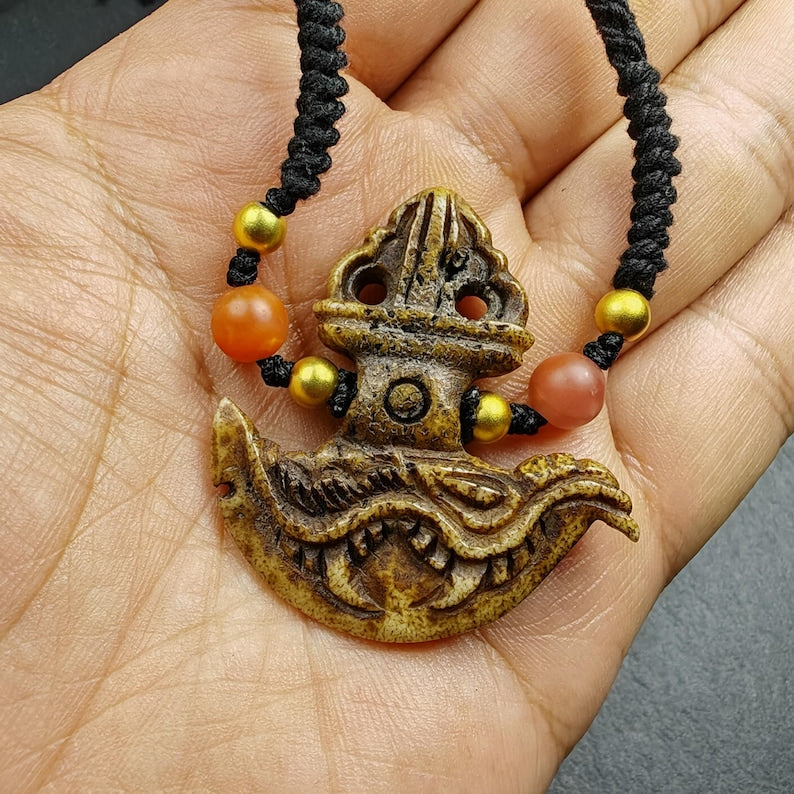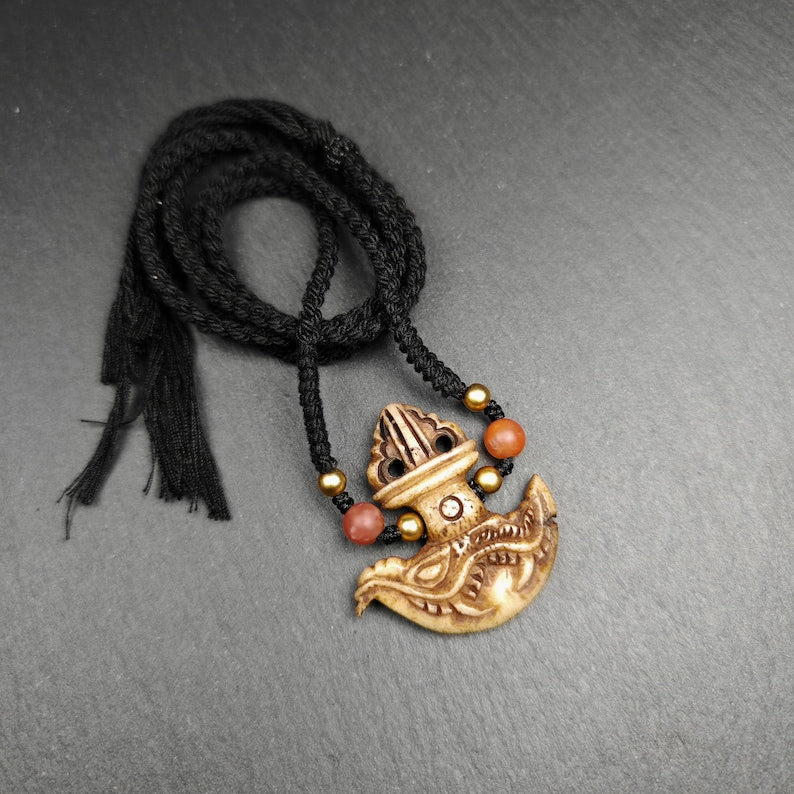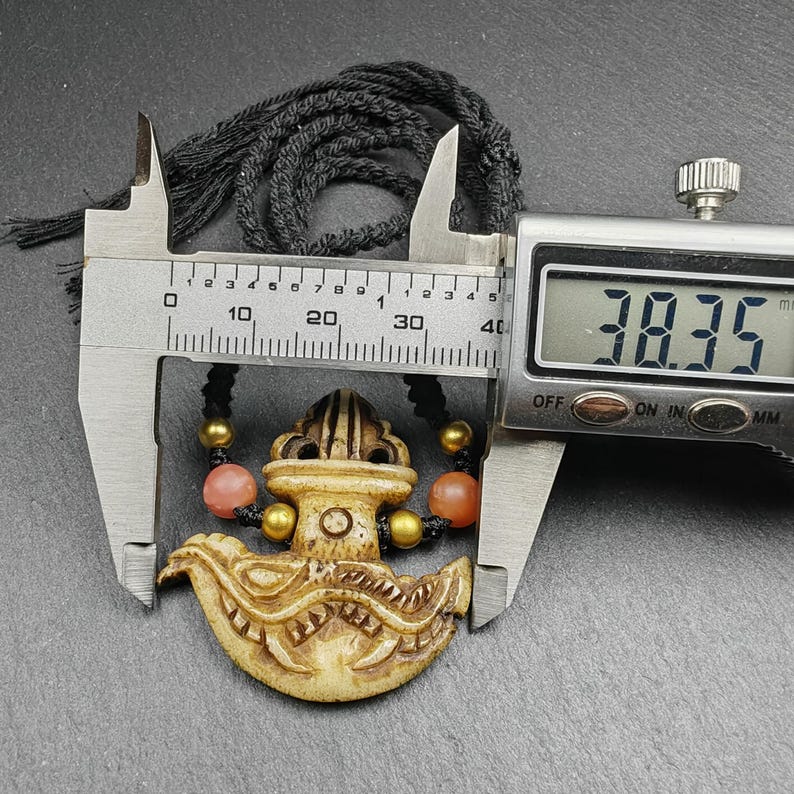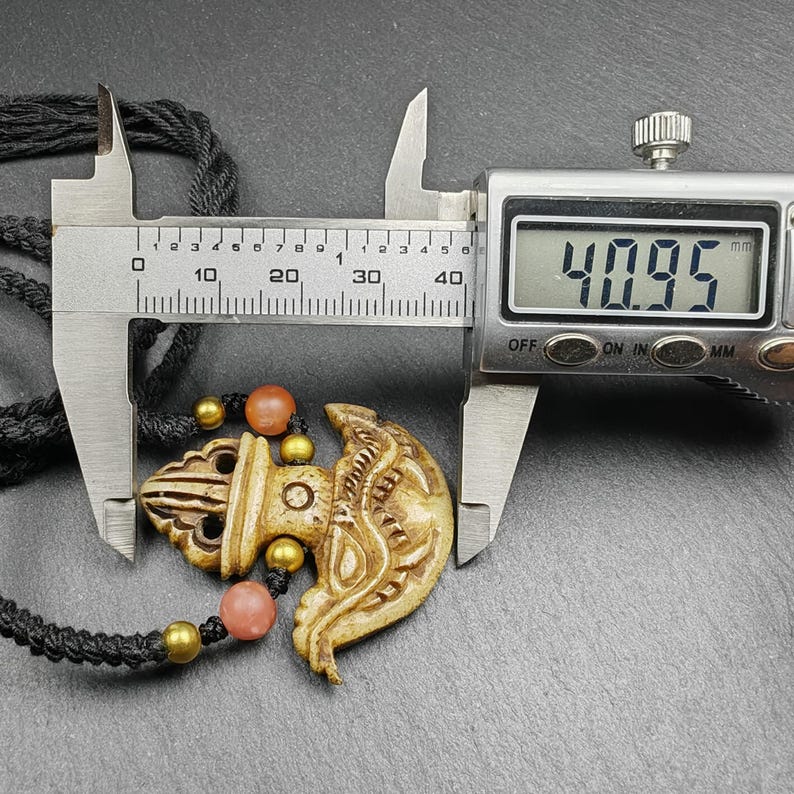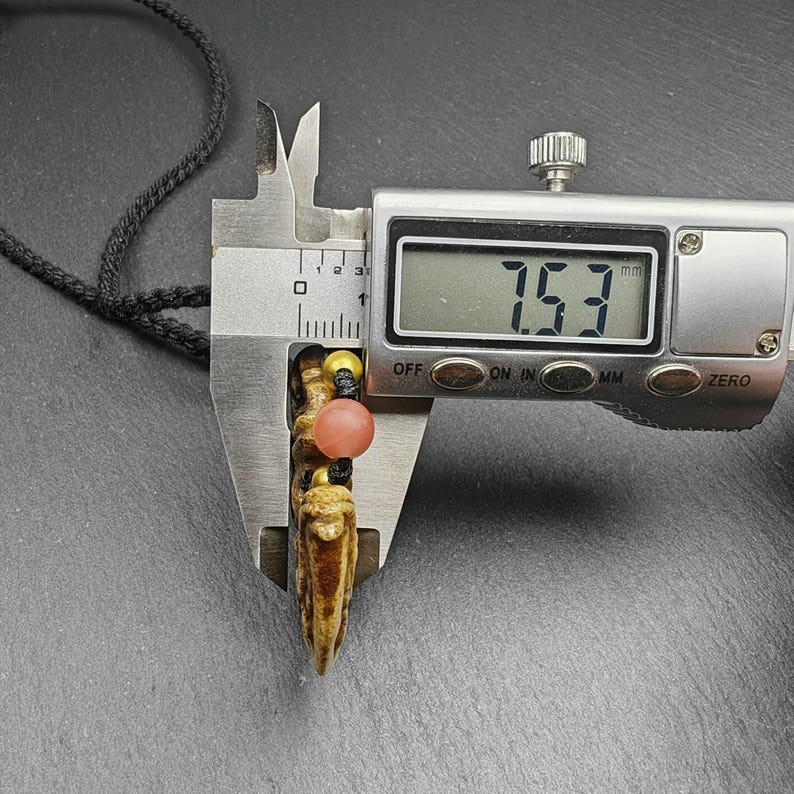Tibetan Kapala Amulet | Kartika Pendant
Tibetan Kapala Amulet | Kartika Pendant
無法載入取貨服務供應情況
ONLY ONE,UNIQUE
This exquisite Tibetan Kapala amulet is a rare and powerful ritual artifact, hand-carved in the sacred form of a kartika (the "knife of the dakinis"), symbolizing the severance of ego and illusion. Collected from Yachen Gar Monastery in Kham, Tibet, this vintage pendant carries decades of spiritual energy, dating back over 40 years.
Meticulously crafted, the pendant features intricate detailing, embodying the profound symbolism of Tibetan Buddhist rituals. The hand-woven lanyard, adorned with a natural agate spacer bead, enhances its mystical charm while ensuring durability and elegance.
A true spiritual protection talisman, this kartika badge is believed to channel divine energy, offering blessings and warding off negative forces. Whether worn as a sacred amulet or displayed as a collector’s piece, this vintage Tibetan jewelry carries the essence of ancient Himalayan wisdom.
Details
Material:kapala
Color:yellow
Pendant Size:
Height: 41mm
Width: 38mm
Thickness:7.5mm
You'll get 1 amulet as pictures shown.
ABOUT KARTIKA
A kartika (Sanskrit: kartari; Tibetan: གྲི་གུག་, Wylie: gri-gug,or kartrika in Nepal,) is a small, crescent-shaped, hand-held ritual flaying knife used in the tantric ceremonies of Vajrayana Buddhism. The kartari is said to be "one of the quintessential attributes of the wrathful Tantric deities."It is commonly known as the "knife of the dakinis."Its shape is similar to the Inuit ulu or woman's knife, which is used for many things including cleaning skins.
While the kartari is normally held in the right hand of a dakini in Vajrayana iconography and spiritual practice, occasionally it can be seen being held by esoteric male deities,such as certain forms of Yamantaka.It is also found frequently in the iconography of the Tibetan Buddhist spiritual practice of Chöd.
The dakini's knife has a flat sharpened blue iron blade with a curved hook at its outer extremity, which enables the flaying activities of cutting, scraping, and pulling. Its faceted or eight-sided handle is attached to the upper edge of the blade by either a leaf-shaped golden mount or the wide-open mouth of a golden makara, and the handle's top is sealed by a half-vajra.
The same way that the bell and vajra are usually paired ritual items in Vajrayana spiritual practice and iconography (one is held in the right hand and the other simultaneously held in the left), the kartika usually appears as a pair with the kapala or "skull-cup".
The shape of the kartika, or trigug, with its crescent shape and the hook on the end, is derived from the shape of a traditional shape of the Indian butcher's knife.
Depictions of Vajrayogini typically contain the kartika as one of her attributes. In the iconography of the enlightened dakinis and tantric female yidams, it is common to find the hooked kartika knife in her right hand and the skull cup in her left, representing "the inseparable union of wisdom and skillful means."
Meanings
The traditional interpretation of the hook in Tibetan Buddhist imagery is that of the hook of compassion. It is the hook which pulls beings out of the cycles of transmigration. The hooked crescent-shaped knife of the dakini with its vajra handle pulls one forth from suffering, chops up the ego-centred self and is guided by the diamond clarity of the vajra.
The kartika is used to symbolize the severance of all material and worldly bonds and is often crowned with a vajra, which is said to destroy ignorance, and thus leading to enlightenment. Another more nuanced interpretation says that "the kartika represents the severing of the two Buddhist obscurations of defilements (klesha avarana) and knowledge (jneya avarana) that obstruct the path of enlightenment." The kartika is also used to cut through human obscurations to progress on the spiritual path including "pride, lack of belief, lack of devotion, distraction, inattention, and boredom."

